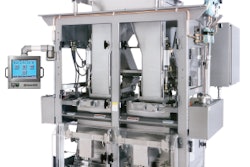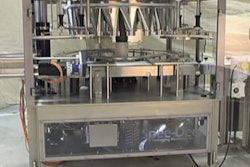Who among us has not had this shopping experience, where we’re confronted with what seems like an avalanche of products? Eventually, all senses become engaged, and the subconscious tracks and registers the total “product” encounter, helping us make a purchase decision and, most likely, laying the foundation for a repurchase decision.
Package and product researchers and designers need to work in unison to deliver products that make purchase and repurchase easy for the consumer. The PTIS Product Formula© (see above) suggests that many factors are closely linked in the consumer’s unconscious or subconscious when a product is purchased. If there are disconnects among any of these factors, or senses, the consumer will challenge and often reject the product.
Consumer senses and the way they interact have been largely underleveraged in package and merchandising design. Vision happens when an image passes through our eyes to our brain and is critical to the decisions we make; it is often the first sense engaged in creating perceptions and expectations. But sound and smell are important, too, as they link directly to memory and emotions. The great “sensation transference” work of the late Louis Cheskin demonstrated that package design can even affect our perception of product flavor, yet typical sensory work is performed without packaging. Sound connects with deep memories—memorable music and audible package cues will connect to positive or negative past experiences. Touch relates to sensing temperature, pleasure, pain, and pressure—and the ability of our largest organ (our skin) to deliver positive or negative messages to be stored in the brain.
Package structure and materials can be used to deliver positive imagery that alters what we may first visually perceive. There are great opportunities for brand products by engaging and linking as many of the human senses as possible through design, incorporating our experiences and insights relative to what elements work successfully throughout the consumer usage experience.
“Our research has shown that most shopping is carried out at the subconscious level,” says PTIS affiliate Dr. Hugh Phillips. “Shoppers use learned subconscious reactions to in-store stimuli.” Phillips has done extensive research in the cognitive psychology of packaging and in-store communications covering all sensory levels. This approach is critical for today’s product and brand success.
Research and package design is at a tipping point and will play an increasingly important role in brand and product success. Researchers such as AcuPoll (eFactor®) have demonstrated that linking design to more pleasant and positive emotions can help assure that success. Brain science tools including fMRI (Functional Magnetic Resonance Imaging), SST (Steady-State Topography), and EEG (Electroencephalography) have validated these findings, taking consumer insight to a new level.
Packaging professionals are using this research and now understand that design elements (materials, container types, colors, fonts, features, etc.) evoke positive imagery with their consumers—across categories and around the world. These findings are the new design stimuli and tools for package designers working to achieve the ultimate goal of delivering successful products that sell in the marketplace, across all channels.
PTIS Product Formula:
Product = product + package + brand equity + experiences + services + sustainability elements.
All of these are linked in the shopper’s unconscious mind, and in a matter of milliseconds they lead to a purchase decision. New neuroscience-based research methods are validating how and why consumers do what they do and are feeding package designers with the information they need to deliver successful solutions.


























